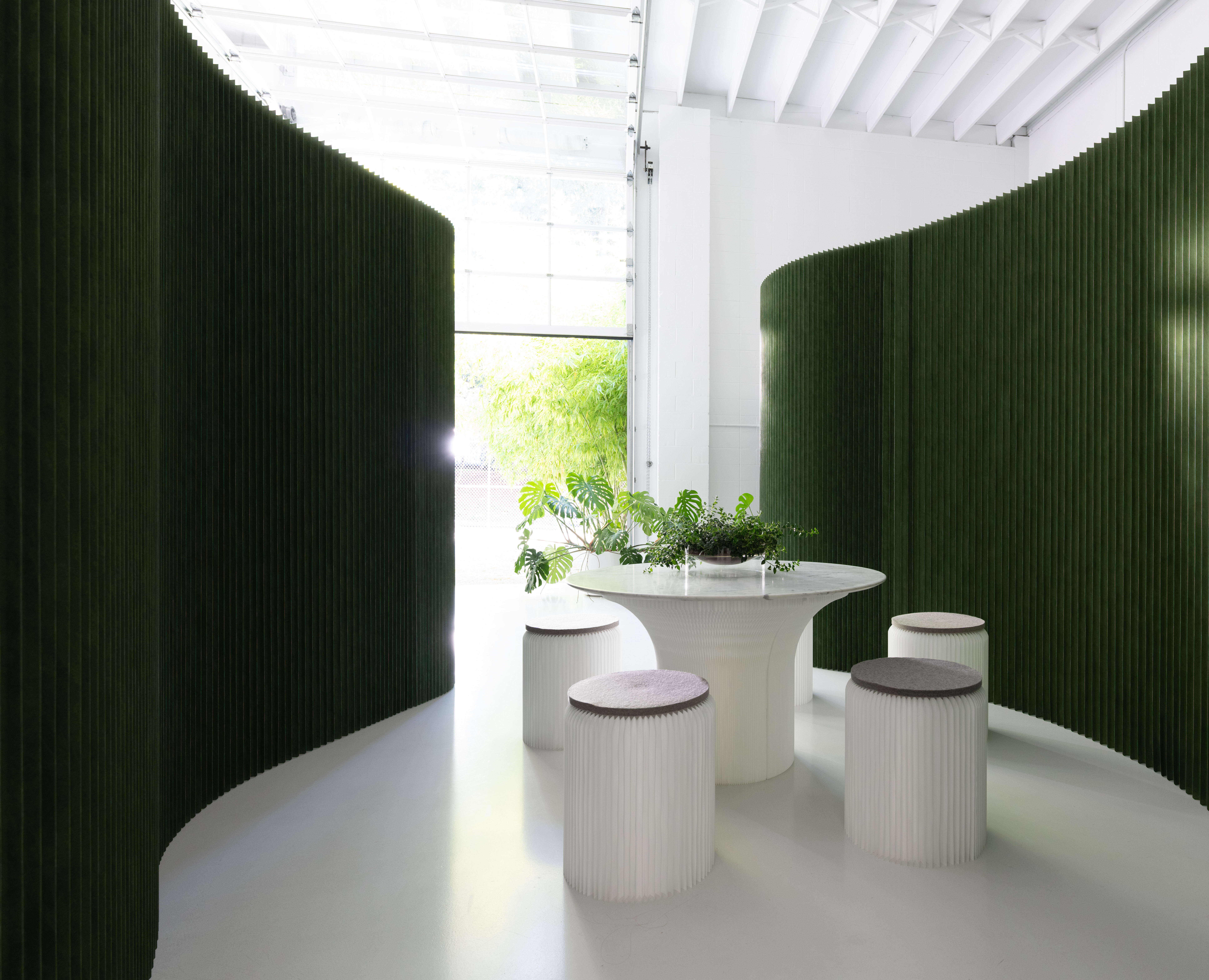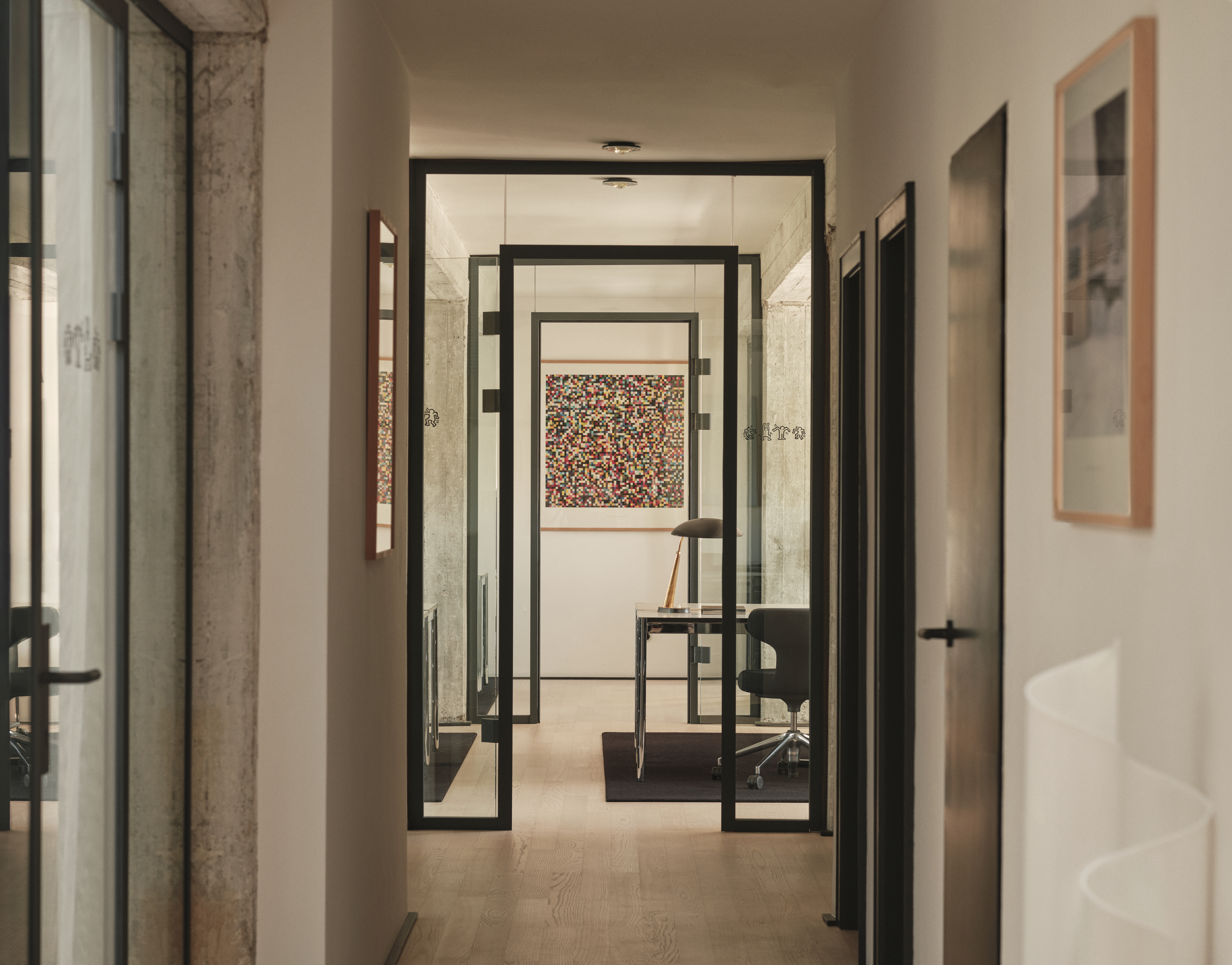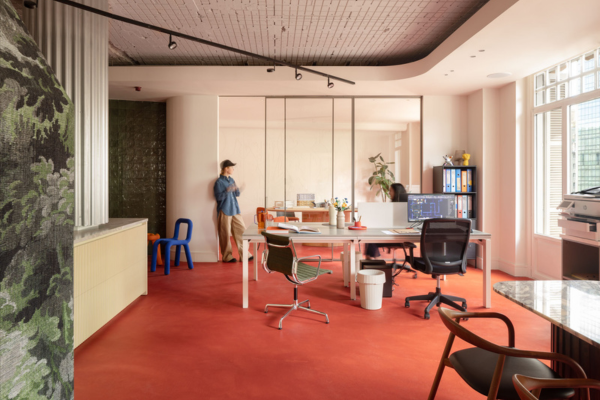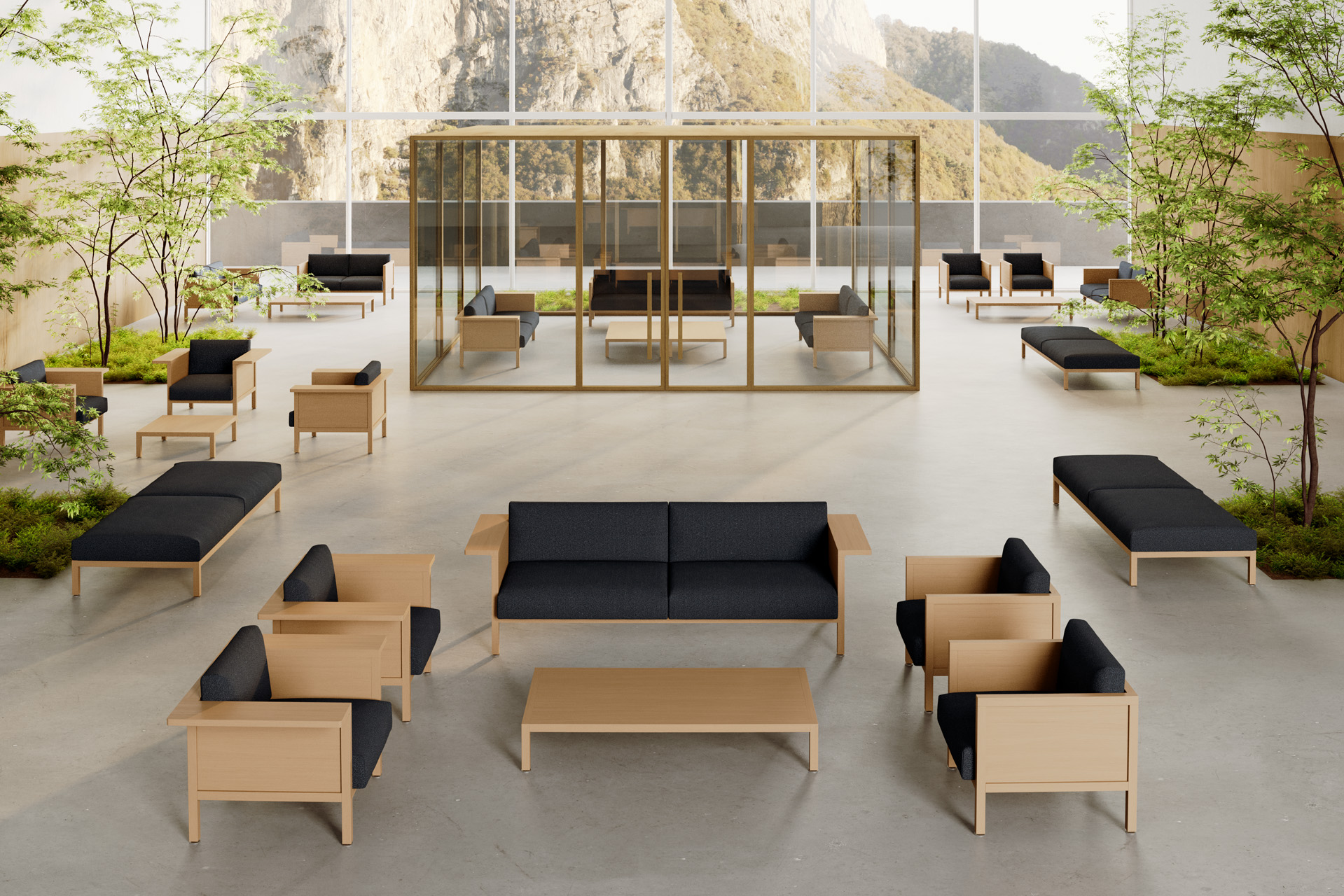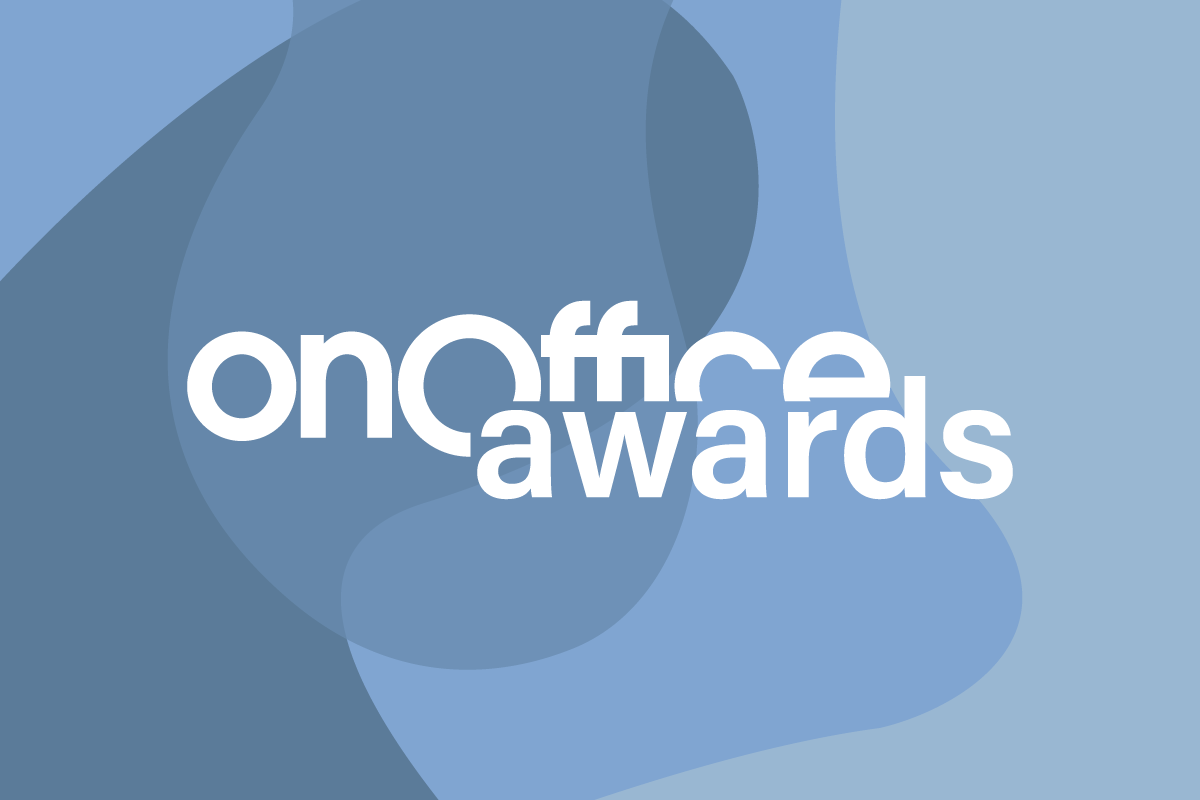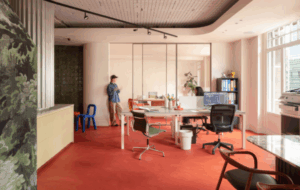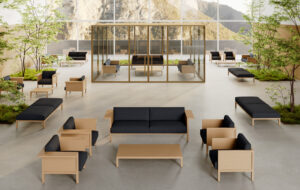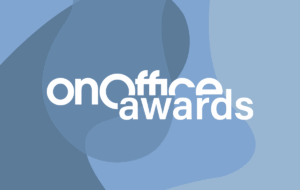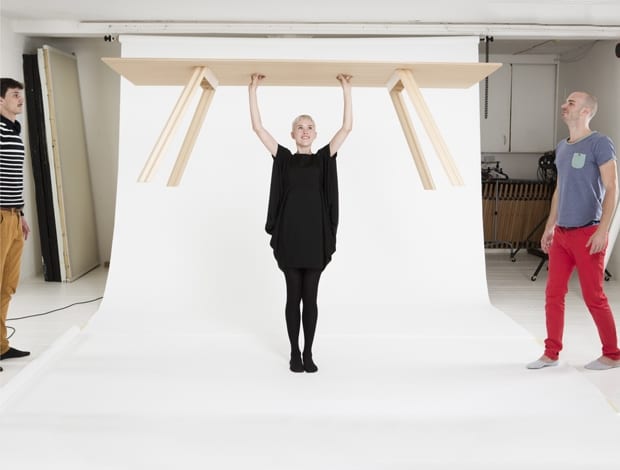 The Ripple Table is light enough for one person to lift|It uses 80% less material than a solid construction, but delivers 400% more strength to weight ratio|The table is made with 3mm cross-laminated plywood|Benjamin Hubert||
The Ripple Table is light enough for one person to lift|It uses 80% less material than a solid construction, but delivers 400% more strength to weight ratio|The table is made with 3mm cross-laminated plywood|Benjamin Hubert||
Q&A: Acclaimed British designer Benjamin Hubert talks to onoffice about being a Design of the Year nominee; choosing the right companies to collaborate with; and the ‘key ingredients’ of good design.
Please can you tell me a bit about your Design of the Year-nominated Ripple Table?
It’s a conventional plywood that’s 3mm thick and cross-laminated with a layer of melamine to stiffen it. It uses 80% less material than a solid construction, but delivers 400% more strength to weight ratio.
One person can pick it up, 10 people can sit at it and one person can stand on it. That’s all a bit of a polarising marketing ploy, but the idea is that you can manoeuvre it easily, it’s extremely strong, and extremely functional in that it sits a lot of people.
“One person can pick it up, 10 people can sit at it and one person can stand on it.”
Why do you think it struck a chord with the judges?
It’s relatively easy to create something from carbon fibre, what’s much more difficult is to take a material that’s been used for a hundred or more years (in terms of lamination), and do something new with it.
People understand [wood], and if you can take something that people already value and heighten it, that makes it really interesting. This is the lightest timber table, and it’s about having this benchmark and saying it’s the best of that.
There’s no point having a [material that people aren’t familiar with] saying ‘wow, this is really light and cool’, because people will say ‘well I didn’t understand it in the first place, so how am I meant to put it in context’. It’s about context.
What other areas is Benjamin Hubert Studio working in?
We do everything from consumer electronics, product design, fashion accessories, domestic goods, furniture, lighting and installations, and now we do interior design (read article: Benjamin Hubert to launch interiors firm). There are five or six of us in the studio and we run a variety of projects for a variety of different clients.
Are there any new areas you’re interested in exploring?
I’d like to get into humanitarian [design], doing products to help people in emerging markets. Whether it’s about getting water, or light in a windowless interior, it’s about trying to do things that are absolutely necessary.
When you entered the industry in 2006/7, you were much lauded and awarded as the ‘next big thing in design’. How has your work evolved since then?
I did lots of things at the beginning where I was just thinking ‘this is cool, this is fun’ without really thinking about it. I think it’s important to take a step back and think about why you’re doing things. That’s the wisdom of hindsight anyway.
Now, we try to make products as smart as they can be, so we invest a lot of time and energy, whereas before the projects were shorter term.
What are the key ingredients to good design?
Sensitivity. Appropriateness. And performance. It’s about doing things that are focused on real values – on what people value – things that are in touch with the way we live our lives.
How many projects will you work on at one time?
It could be ten projects or something like that, but it’s not the amount of projects that’s the issue, it’s how much attention we can give them. We never start two projects at the same time; we always stagger them in order to give [each of] them enough space to breath.
How do you tailor your products to your different collaborators?
We like to understand the DNA of a brand. Virtually all our products are collaborations, so we’ll work with the company from the beginning, figure out their design language and how to integrate ours with it. It’s like a dance in a way and it’s only through conversation that we can try and get there.
Did you envisage having this breadth of product initially?
I come from an industrial design background working on everything from mobile phones to pushchairs and train interiors, so my experience is very broad.
Do you ever worry about over-extending the brand?
That’s not my concern. It’s just about making sure the projects we do are the right ones. You can’t always know, but we try to be very selective.
We’ve done a lot of furniture, so we’re doing less furniture now and we’re only working with the brands that can really deliver things at the highest level. Again, you can’t always do that from the beginning.
You’ve said that it’s hard to turn down work early on in your career, is that still the case?
No, we’re very selective now. Of course, finances have to come into it, but we have the luxury of lots of people asking us to do things, and we really are getting much clearer on what we want to do.
Don’t get me wrong, we’re not sitting around wondering who we should collaborate with next, we’re working hard to get to work with the people we want to.
What does it mean to you to be nominated for the Design Museum’s Design of the Year?
It’s really nice, I mean competitions are lovely to be part of and I have a lot of respect for it and I think the Design Museum is a great platform to be involved with.
You were quoted in a previous interview saying: “Awards come and go, they’re not a mark of good design though, that’s for sure.” Is that something you still feel?
Yes, course. An award is a lovely thing, but it’s not always a balanced view. Awards are about people’s opinions and they change.
I think the proof of a good design is whether people are still using it in years to come and it hasn’t broken, and people still love it. That’s the mark of good design.
Which product of yours do you think is most likely to become a future classic?
Unfortunately, I don’t have the faintest idea. We know what sells and we know what people like, but the proof is time. Ask me again in ten years.

